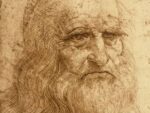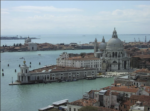Seo Young Deok
 (480x345).jpg)
Liquid art system, progetto fondato da Franco Senesi, presenta la prima mostra personale in Italia dell’artista coreano Seo Young Deok (1983).
Comunicato stampa
Liquid art system, progetto fondato da Franco Senesi, presenta la prima mostra personale in Italia dell'artista coreano Seo Young Deok (1983).
La mostra verra' inaugurata il 20 agosto alle 19,30 a Capri alla White Room in Via Vittorio Emanuele,56 e restera' aperta fino al 13 Settembre.
L’Italia, ed in particolare il golfo di Napoli con Capri, dove Seo Young Deok espone per la prima volta, costituisce per la sua scultura un confronto importante: è il punto di arrivo di un viaggio concettuale ed ispirativo molto lungo, e, al contempo è il luogo d’incontro con una cultura artistica molto diversa dalla propria d’origine, ma con la quale Seo Young Deok ha intrapreso un fruttuoso dialogo.
Nell’area geografica in cui la cultura romana ha incontrato l’arte greca, creando le basi per la diffusione del “classico” nella scultura e nell’architettura di tutto l’occidente, giunge un giovane scultore coreano, il quale, nel suo lavoro si mostra decisamente interessato alla statuaria classica (occidentale), ma il cui punto d’osservazione e quello di partenza per il proprio lavoro plastico restano assolutamente opposti a quelli occidentali.
Questa sua prima mostra in Italia, alla White Room di Capri, può essere il luogo per mettere in evidenza il dialogo di Seo Young Deok con il classico (occidentale), che, se può essere scontato per un artista occidentale come Antony Gormley, al quale l’artista coreano è stato spesso accostato dalla critica, non è assolutamente scontato per lui.
Questo dialogo con l’occidente appare come un’altra delle tante connessioni cui l’artista allude utilizzando le catene di cui sono fatte le sue sculture. Al contrario di Gormley, Seo Young Deok utilizza la grammatica della “postproduzione”, comune alle generazioni nate dopo il 1980, come strumento per leggere ed interpretare la realtà: recuperando un materiale propriamente industriale come le catene (che siano normali o di bicicletta), con una tecnica d’assemblaggio di altissima maestria, egli riesce a farne la base e la materia con cui raccontare il mondo.
Come lo stesso Nicolas Bourriaud affermava - introducendo il concetto di “postproduzione” nel parlare della pratica artistica a partire dagli anni Novanta - si tratta del metodo più adatto per reagire al caos della cultura globale nell'era dell'informazione. Nelle connessioni tra le catene Seo Young Deok vede una metafora dei collegamenti tra le informazioni, che in questo nuovo secolo hanno assunto caratteri di grande complicazione, per l’infinità caotica delle possibilità.
Sembra voler rappresentare il modo in cui le informazioni si coagulano, si condensano e creano forme in grado di raccontare storie… storie di persone… storie “umane”. Le connessioni tra le catene e quelle tra le informazioni rimandano così anche agli interscambi nei circuiti cerebrali.
Il punto di contatto con la scultura classica occidentale è proprio nella capacità delle sue sculture di raccontare storie nelle quali gli uomini possono immedesimarsi. La statuaria classica è in grado di esprimere una amplissima gamma di sentimenti soltanto attraverso la rappresentazione del corpo umano; basta osservare un torso classico (greco, romano, rinascimentale o barocco, ecc.), un busto, per rendersi conto che la parte è in grado di simboleggiare il tutto, attraverso le emozioni o le azioni che si riflettono nelle tensioni muscolari dell’intero corpo. Lo storico dell’arte Ernest Gombrich affermava proprio che il punto di partenza dell’immedesimazione tra l’osservatore e le figure rappresentate dagli artisti è proprio dalla risposta muscolare che questi inducono in chi li osserva. Anche Seo Young Deok induce questa risposta nei suoi osservatori: i suoi uomini e le sue donne, tutti rigorosamente nudi come le sculture classiche, esprimono azioni e sentimenti con cui l’osservatore si compenetra. I suoi personaggi senza volto esprimono una profonda malinconia espressione della vita inquieta di persone che vivono nei tempi della civiltà ad alta tecnologia.
Ciò in cui il suo lavoro plastico diverge dalla scultura classica occidentale sta invece nella costruzione materiale delle proprie figure. Leon Battista Alberti nel suo “De Statua”, il primo trattato rinascimentale che abbia tramandato alla modernità le tecniche scultore in uso dall’antichità, parla di due approcci completamente differenti alla scultura: quella “per via di porre” e quella “per via di levare”. Il primo approccio, chiamato “plastica” è tipico della scultura eseguita con materie molli (argilla, cera, gesso, ecc.); la seconda è invece tipica della statuaria in pietra (è risaputa ad esempio l’opinione di Michelangelo che la scultura “si faccia per forza di levare” e che “quella che si fa per via di porre è simile alla pittura”).
Seo Young Deok ha ideato invece un metodo plastico (per via di porre) attraverso l’utilizzo di una materia rigida che non può essere plasmata e che non asseconda l’azione delle mani. In questa caratteristica tecnica consiste la sua grande modernità : la sua capacità di creare delle sculture in grado di esprimere l’intensità emotiva della statuaria classica attraverso una materia ed una tecnica possibili solo in una società ad alta tecnologia.
ENG
Liquid art system – a Franco Senesi's project – presents the first solo exhibition in Italy the Korean artist Seo Young Deok (1983).
The exhibition will open on August 20, at 7,30 pm, in Capri at the White Room in Via Vittorio Emanuele,56 and will continue until September 20.
Italy, and in particular the Bay of Naples with Capri, where Seo Young Deok exhibits for the first time, is an important challenge for his sculpture: it is the landing point of a very long conceptual and inspirational journey and, at the same time, it is the place to meet an artistic culture so much different from his native one, but with which Seo Young Deok has started a fruitful relationship.
A young Korean sculptor arrives in the geographical area where the Roman culture met the Greek culture – by laying the foundations to spread the “classical” into the western sculpture and architecture – and, in his works, he proves to be very interested in the (western) classical sculpture, but whose observation and starting points of his model works remain definitely opposite to the western ones.
His first exhibition in Italy, at the White Room in Capri, can be the place to highlight Seo Young Deok's interaction with the (western) classical which, if it may be expected for a western artist like Antony Gormley – to whom the Korean artist has often been compared by critics – must absolutely not be taken for granted for him.
This interaction with the western world seems to be another of the many connections to which the artist alludes by using the chains forming his sculptures. Unlike Gormley, Seo Young Deok uses the “post-production” language, prevalent in those generations born after 1980, as a tool to read and to interpret reality: by repurposing an industrial material such as chains (either standard or bike chains), with a highly skilled assembly technique, he is able to turn them into the basis and material to describe the world.
As Nicolas Bourriad himself maintained – by introducing the concept of “post-production” when speaking of the artistic practice in the 90s – this is the most suitable method to react to the chaos of global culture during the information era. To Seo Young Deok, the connections between chains are a metaphor of the connections between the pieces of information, that – in this century – have been getting greatly complicated due to the endless chaos of possibilities.
He seems to be willing to represent the way in which pieces of information thicken, condense and create shapes that can tell stories... people's stories... “human” stories. The connections between chains and those between pieces of information also refer to the exchanges within the brain circuits.
The contact point with the western classical sculpture is in the ability of his works to tell stories that people can identify themselves with. Classical sculpture can express a very broad range of feelings just by representing the human body; it suffice to observe a classical (Greek, Roman, Renaissance or Baroque, and so on) bust to realize that it is the portion which is able to represent the whole, through emotions or actions that are reflected in the muscle tension of the whole body. The art historian Ernest Gombrich maintained that the starting point of the viewer's identification with the figures portrayed by artists is actually in the muscular response that they inspire to viewers. Also Seo Young Deok inspires such a response in his viewers: his men and his women are all naked as classical sculptures, they express actions and feelings with which the viewer identifies him/herself. His faceless characters show a deep sadness, a sign of the restless life of people who live in times of high-tech civilization.
The differences between his sculptures and the western classical sculpture lie in the material construction of his figures. Leon Battista Alberti, in his “De Statua” (On Sculpture), the first Renaissance essay to transmit the sculpture techniques used in the past to contemporary generations, speaks of two totally different approaches to sculpture: the one “by adding” and the other “by removing”. The first approach, called “plastic”, is typically used when sculpting soft materials (clay, wax, plaster and so on); the latter is used when sculpting stones (it is widely known that Michelangelo believed that sculpture “is made by removing” and that “the one made by adding is similar to painting”).
On the contrary, Seo Young Deok created a sculpture method (by adding) by using a stiff material that cannot be shaped and does not follow the movements of hands. His great modernity is in this technical feature: his ability to create sculptures that can express the emotional intensity of classical statues by using a material and a technique that are only available in a high-tech society.
___________
Il progetto Liquid art system, con i suoi dipartimenti, White Room, Square Gallery, Studio Lab e Art Archive, propone un modo "glocale" di promuovere e commercializzare l'arte contemporanea.
The Liquid art system project, with its departments, White Room, Square Gallery, Studio Lab and Art Archive, proposes a “glocal” way to promote and sell contemporary art.



